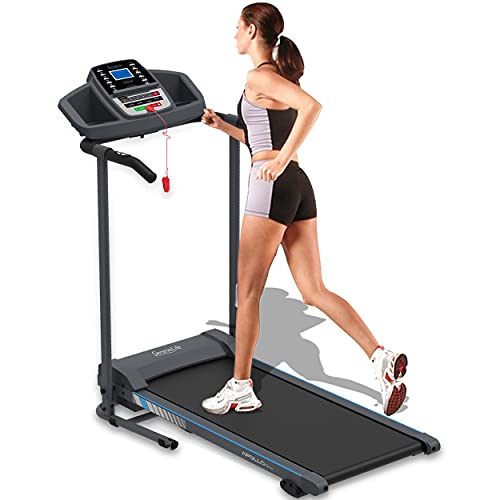Discovering the Manual Incline Treadmill: A Comprehensive Guide
As the fitness market constantly evolves, with new devices and makers hitting the market, one piece of equipment has stayed a staple in lots of homes and gyms: the treadmill. Particularly, the manual incline treadmill uses a distinct method to cardiovascular fitness training. This guide explores the functions, benefits, and considerations of utilizing a manual incline treadmill.
What is a Manual Incline Treadmill?
A manual incline treadmill is a non-motorized treadmill that needs users to power their movement by walking or working on the belt. Unlike traditional treadmills, which rely on electrical power to move the belt, manual incline treadmills depend solely on the user's energy. The incline setting, which can be adjusted, helps simulate uphill running, providing an efficient exercise.
Key Features of Manual Incline Treadmills
| Function | Description |
|---|---|
| Manual Operation | Users should move the belt themselves, making it a self-paced exercise. |
| Adjustable Incline | Incline settings can be adjusted, offering varied resistance for a harder obstacle. |
| Compact Design | Frequently more light-weight and compact than motorized treadmills, making them easier to store. |
| Durable Construction | Typically developed with tough products, developed to stand up to strenuous usage. |
| Digital Display | Some designs might feature a basic digital display screen to show time, range, and calories burned. |
Benefits of Using a Manual Incline Treadmill
1. Improved Cardiovascular Fitness
The manual incline treadmill efficiently elevates heart rate, resulting in enhanced cardiovascular health. The incline setting requires more effort from the muscles, thereby increasing the overall workout intensity.
2. Adjustable Workouts
With manual treadmills, users have full control over their rate and incline. This feature enables them to tailor exercises to align with fitness objectives, whether focusing on endurance structure or interval training.
3. Lower Operating Costs
Manual incline treadmills do not need electricity, making them a cost-effective alternative to standard treadmills. This affordable aspect appeals to those looking to boost their home gym without incurring high energy bills.
4. Engaging Full-Body Workout
Running or walking on an incline engages numerous muscle groups, consisting of the legs, glutes, and core. Home Treadmills -body activation assists tone and strengthen the body while burning extra calories.
5. Lowered Risk of Injury
The low-impact nature of a manual incline treadmill can be less taxing on the joints compared to high-impact aerobic workouts. However, users should still practice great kind and begin gradually to decrease the risk of pressures or injuries.
Considerations When Using a Manual Incline Treadmill
Security First
While manual incline treadmills have numerous advantages, there are some safety factors to consider to keep in mind:
- Falling Hazard: Since users propel the belt themselves, it's important to maintain a constant rate to prevent losing balance.
- Incline Levels: Adjusting the incline during use can be tough and needs cautious attention to maintain stability.
Appropriate Form and Technique
To take full advantage of the advantages while minimizing the threat of injury, users need to highlight proper running or walking form. This consists of keeping the back straight, shoulders unwinded, and arms in a natural position.
How to Choose the Right Manual Incline Treadmill
Picking the best manual incline treadmill is paramount to accomplishing fitness goals. Below are crucial factors to think about:
| Criteria | Suggestions |
|---|---|
| Weight Capacity | Make sure the treadmill can support your weight; the majority of have capabilities ranging from 250 to 400 pounds. |
| Adjustability | Search for treadmills with numerous incline settings to provide exercise range. |
| Portability | Think about foldable designs if storage space is limited. |
| Convenience Features | Inspect for non-slip surface areas and cushioned running locations to boost convenience. |
Often Asked Questions (FAQ)
1. How do I keep a manual incline treadmill?
To keep a manual treadmill, regularly inspect the belt for wear and guarantee it operates efficiently. Tidy the frame and running surface, and inspect the bolts and screws for signs of loosening.
2. Is a manual incline treadmill ideal for novices?
Yes, manual incline treadmills can be suitable for novices. Users can start at a sluggish speed and slowly increase strength. However, it's vital to comprehend one's fitness level and begin thoroughly.
3. Can I carry out interval training on a manual incline treadmill?
Definitely. The adjustable incline feature permits users to develop different workouts, ideal for interval training. Alternate between walking and performing at various slopes to keep workouts engaging and challenging.
4. Is a manual incline treadmill quieter than a motorized one?
Yes, due to the absence of a motor, manual incline treadmills normally operate more quietly, making them an outstanding option for shared spaces.
5. How much area do I require for a manual incline treadmill?
Manual incline treadmills generally occupy less space than motorized designs. Nevertheless, users ought to ensure there's sufficient space for movement around the treadmill for security.
The manual incline treadmill uses a special blend of benefits and flexibility, making it an excellent option for those wanting to enhance their workout routine without counting on electrical power. From improved cardiovascular fitness to customizable training choices, it offers a thorough technique to physical fitness. By understanding its features, benefits, and security factors to consider, users can choose the ideal design and include it effectively into their workout regimen. Whether utilized in a home gym or a larger physical fitness center, a manual incline treadmill can be a vital tool for those concentrated on fitness and health.

